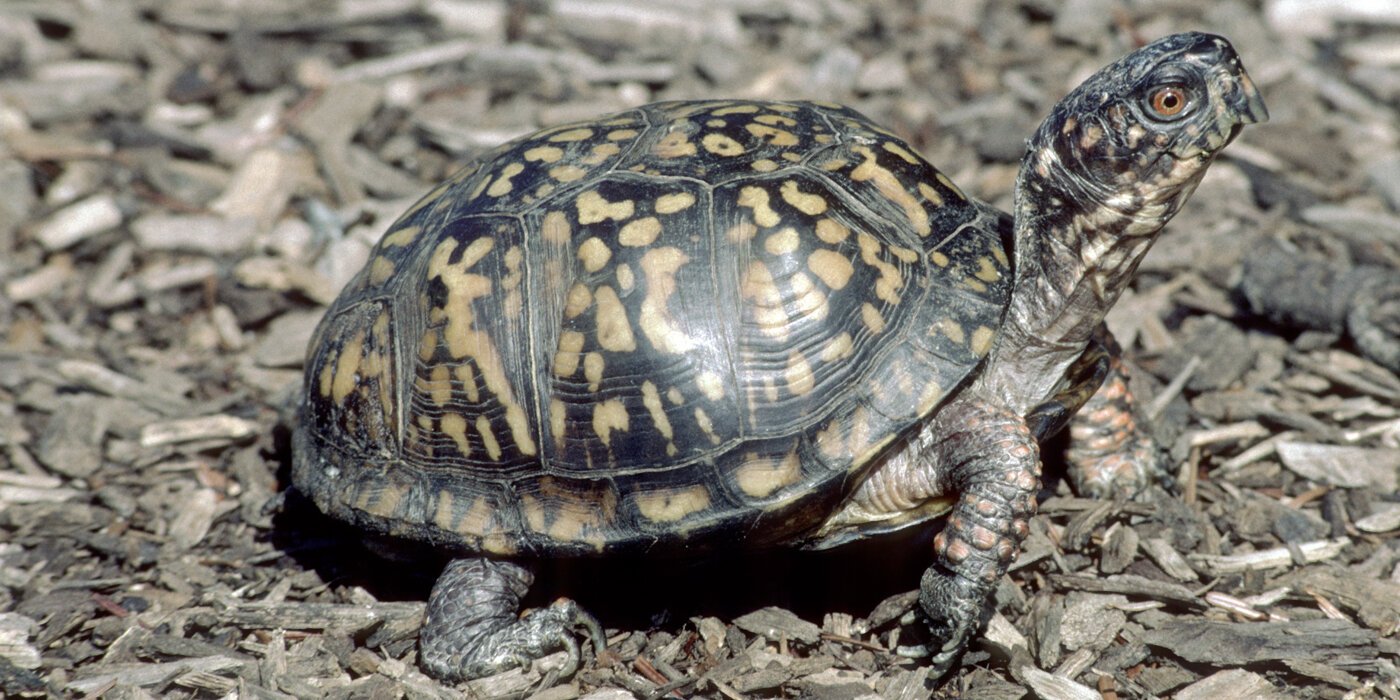Feeling Boxed In? - Get out and join our seasonal search for box turtles.
For over forty years, the Nature Center has been dedicated to monitoring our local box turtle populations, in the name of conservation. Keeping tabs on the number and variety of box turtles helps gauge the general health and biodiversity of the woods which we work hard to maintain. Previously, we have physically attached trackers to turtles and logged their movements. Unfortunately, it is expected that all the trackers have fallen off or are no longer functioning. Luckily as technology advances, methods of tracking have improved to a point where anyone who encounters one of these critters can aid in conservation efforts.
How Can I Help?
You can help us keep track of the box turtles in their habitat by simply using your smartphone to take photos of discovered specimen and noting the location. Whether you submit your findings using iNaturalist or send the information to a member of our conservation team, you are providing important information to help further our understanding of what lives on this 47-acre preserve.
What should I look for?
Eastern box turtles are most commonly identified by their upper shells or “carapace.” Typically, this part of the shell is brown and can include lines, spots, or blotches that are orange to yellow in color. Male box turtles generally have red eyes while females are known to have darker red or brown eyes.
You may have seen our resident Chinese box turtle, Sophie, in our visitor center.
Photo credit: Maryland Zoo
Photo credit: Smithsonian's National Zoo
Where should I look?
Turtles usually live in the water but a unique characteristic of the common box turtle is that they are predominantly terrestrial animals, meaning they live on the land.
Box turtles often seek shelter in brush piles consisting of various decaying twigs, branches, and logs. The thorny cat brier on our property creates a good protective barrier from predators.
Most turtle sightings at Rye Nature Center occur around Nanderwhere Pond or our smaller pond. Another “hot spot” is the elevated clearing between the STEM Challenge course and our North Street entrance. This area has sufficient cat brier, fallen trees, and brush piles for cover, along with plenty of open space to bask in the sun.
Man-Made Brush Pile
Crafted By Jack, Gennaro, and Annette to provide a sheltered area.
Another Example of a Brush Pile
Overlook View of the Small Pond
Located behind the Nature Center building
Nanderwhere Pond
Turtles love to sunbathe on the small island
Turtle Hot Spot!
Directly beyond the STEM challenge course
When Should I Look?
When setting out on a search for box turtles, it helps to look when the turtles are most active. These include earlier on warm mornings as well as right after a rain storm.
I found one, what now?
Make sure to take as many photos from different angles as possible.
Be mindful of where you walk and careful to avoid trampling any plants or possible animal homes that could exist off trail.
Be sure to upload photos taken and submit them to either iNaturalist or email them to jackmeyers@ryenaturecenter.org.
Have fun searching and share your discoveries with us by tagging @RyeNatureCenter on Facebook or Instagram!








